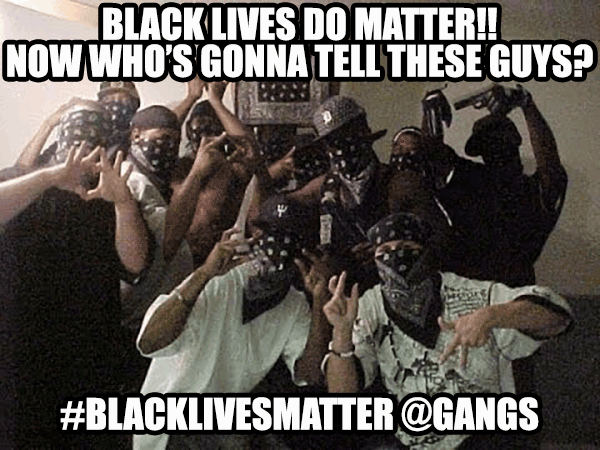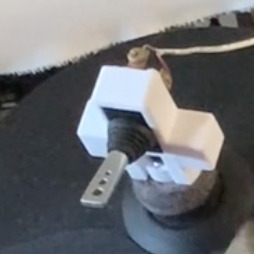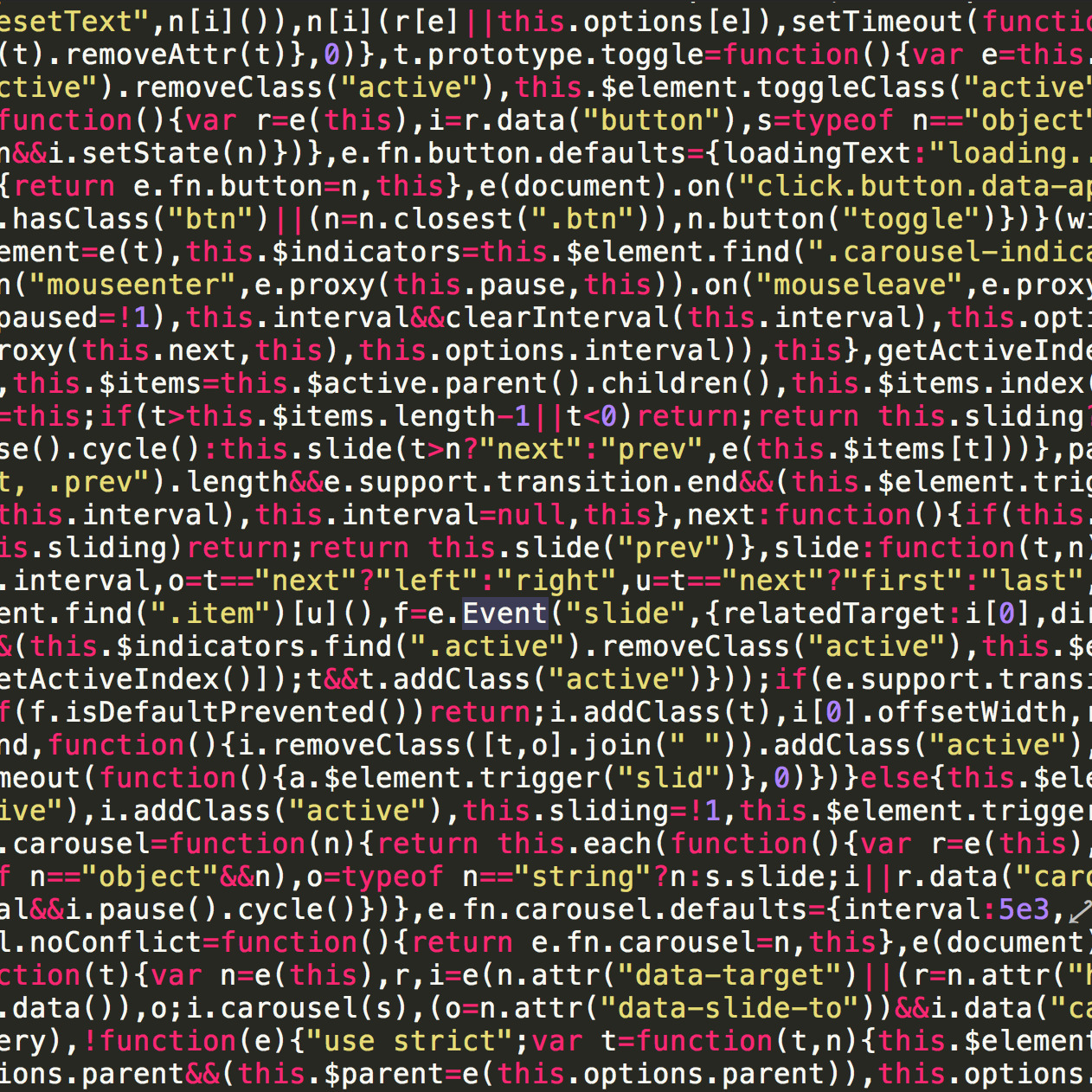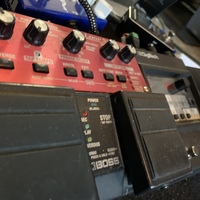Black Lives Matter Now Whos Gonna Tell These Guys @ Gangs

So what I want to see happen is protests in front of groups of gang members to let them know that killing armed or unarmed people in general is all around bad. You don't see that though. I'm not going to tell them. They will kill me for trying. I know there's a lot of younger people out there that think the thug life is the way to go to get your respect (pronouced 're-spék!') that doesn't involve any kind of hard work or anything that would actually earn one respect; just keep in mind, the thug life is also an great way to get a bullet lodged into the back of your face. Here's some exciting facts about gangs in the US from the FBI's website:
There are approximately 1.4 million active street, prison, and OMG gang members comprising more than 33,000 gangs in the United States. Gang membership increased most significantly in the Northeast and Southeast regions, although the West and Great Lakes regions boast the highest number of gang members. Neighborhood-based gangs, hybrid gang members, and national-level gangs such as the Sureños are rapidly expanding in many jurisdictions. Many communities are also experiencing an increase in ethnic-based gangs such as African, Asian, Caribbean, and Eurasian gangs. Gangs are responsible for an average of 48 percent of violent crime in most jurisdictions and up to 90 percent in several others, according to NGIC analysis. Major cities and suburban areas experience the most gang-related violence. Local neighborhood-based gangs and drug crews continue to pose the most significant criminal threat in most communities. Aggressive recruitment of juveniles and immigrants, alliances and conflict between gangs, the release of incarcerated gang members from prison, advancements in technology and communication, and Mexican Drug Trafficking Organization (MDTO) involvement in drug distribution have resulted in gang expansion and violence in a number of jurisdictions.
Gangs are increasingly engaging in non-traditional gang-related crime, such as alien smuggling, human trafficking, and prostitution. Gangs are also engaging in white-collar crime such as counterfeiting, identity theft, and mortgage fraud, primarily due to the high profitability and much lower visibility and risk of detection and punishment than drug and weapons trafficking. US-based gangs have established strong working relationships with Central American and MDTOs to perpetrate illicit cross-border activity, as well as with some organized crime groups in some regions of the United States. US-based gangs and MDTOs are establishing wide-reaching drug networks; assisting in the smuggling of drugs, weapons, and illegal immigrants along the Southwest Border; and serving as enforcers for MDTO interests on the US side of the border.
Many gang members continue to engage in gang activity while incarcerated. Family members play pivotal roles in assisting or facilitating gang activities and recruitment during a gang members’ incarceration. Gang members in some correctional facilities are adopting radical religious views while incarcerated.
Gangs encourage members, associates, and relatives to obtain law enforcement, judiciary, or legal employment in order to gather information on rival gangs and law enforcement operations. Gang infiltration of the military continues to pose a significant criminal threat, as members of at least 53 gangs have been identified on both domestic and international military installations. Gang members who learn advanced weaponry and combat techniques in the military are at risk of employing these skills on the street when they return to their communities.
Gang members are acquiring high-powered, military-style weapons and equipment which poses a significant threat because of the potential to engage in lethal encounters with law enforcement officers and civilians. Typically firearms are acquired through illegal purchases; straw purchases via surrogates or middle-men, and thefts from individuals, vehicles, residences and commercial establishments. Gang members also target military and law enforcement officials, facilities, and vehicles to obtain weapons, ammunition, body armor, police gear, badges, uniforms, and official identification.
Gangs on Indian Reservations often emulate national-level gangs and adopt names and identifiers from nationally recognized urban gangs. Gang members on some Indian Reservations are associating with gang members in the community to commit crime. Gangs are becoming increasingly adaptable and sophisticated, employing new and advanced technology to facilitate criminal activity discreetly, enhance their criminal operations, and connect with other gang members, criminal organizations, and potential recruits nationwide and even worldwide.
https://www.fbi.gov/stats-services/publications/2011-national-gang-threat-assessment
Comments
Categories
- The Beast 66
- Stupid Stories 64
- On My Commute 31
- Computer Programming 21
- Italian Dual Citizenship 10
- Food 8
- Black Lives Do Matter 8
- Playing Out 5
- Not So Stupid Stories 5
- Quick Projects 4
- Movies I've Made 4
- Scams 3
- Film Projects 2
- Making Movies 2
- Programming Tutorials 2
- The Robot Sbot 2
- Ryvid Anthem 1
- Old Man Rants 1
- 3D Printing 1
- Rental Car Reviews 1
- Other's Music 1
- My Original Music 1











